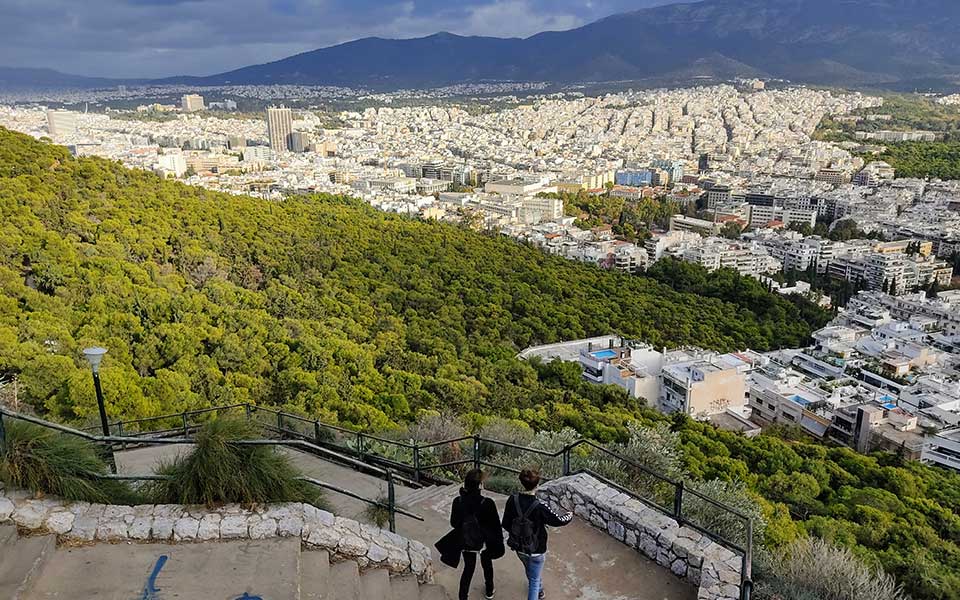Dexameni seems like a different square; almost unrecognizable. With its legendary café shut, the outdoor cinema also closed, and the young people who usually flock here in the afternoons absent, the setting has changed. During the week, there is a different type of calm to be enjoyed here during the day.
We sit on the benches under the olive and mulberry trees, gazing at the monumental cistern (“dexameni” in Greek) that was once part of Hadrian’s Aqueduct and which gave the square its name, peeking through the glass for a glimpse of its interior. We can only hear the birds chirping, and the low conversations of the few pensioners sitting on another bench, enjoying the same peacefulness.
A child on a scooter with his mother rush past, a lawyer pours out his thoughts next to the bust of Odysseas Elytis, and two teenagers catch up while pretending to exercise.
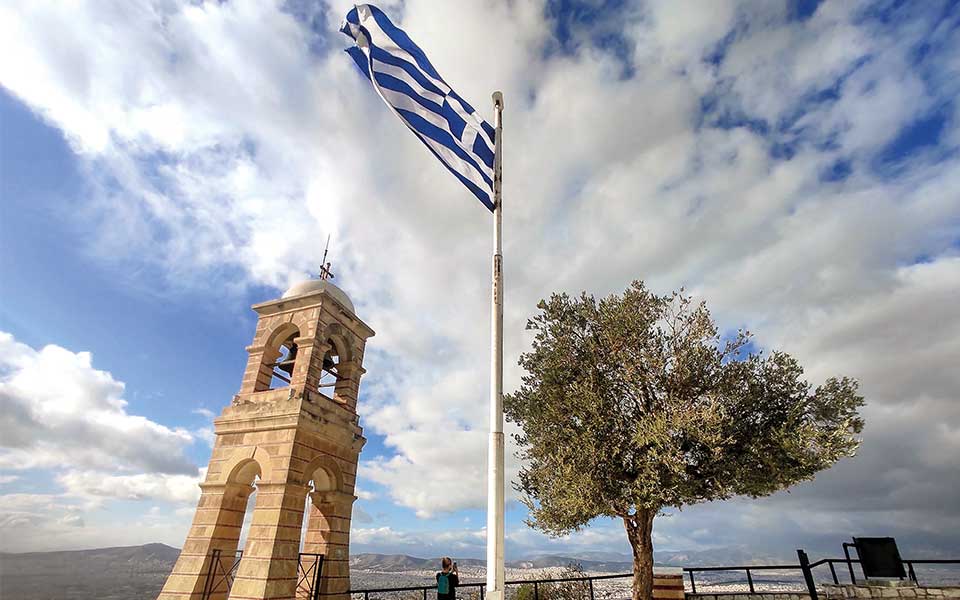
© Olga Charami
The walk towards Lycabettus Hill begins from the steps on the upper part of the square. Once on Stratikou Syndesmou Street, we turn right onto Xanthipou and Ilia Rogakou, and begin going uphill opposite the St. George Lycabettus hotel.
The incline is gentle and there are two routes: the dirt paths straight ahead, or the paved pathways through the pine forest. Generally there are many options, and you can walk in any direction you desire.
We turned right towards the cable car and then left, arriving at the Prasini Tenta café. To our surprise it was open, for coffees and beverages to go. Many come here to admire the view of the Parthenon and the sea, sitting on the parapets.
To the right, a long walk along the road leads towards Alexandras Avenue, to the left to the small church of Aghioi Isidori; we continued along the spiral paved pathway to the peak (277 meters), where the famous viewing point and church of Aghios Georgios (renovated in the 20th century) are located. Some enjoy the walk to the peak, stopping every now and then for a breather, similar to those who have come here for jogging and exercise.
The landscape above this point is rocky, spotted with just prickly pears and century plants, with the city and Mount Ymittos in the background.
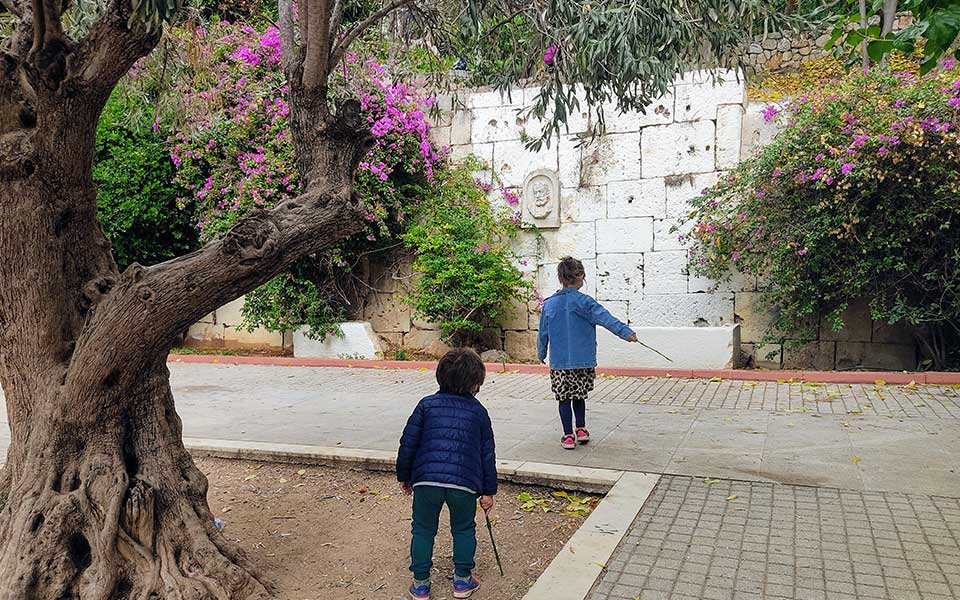
© Olga Charami
It is very windy by the chapel; it seems that the enormous Greek flag might be ripped off its pole at any moment. The few who have come up here during the day to admire the view are taking pictures, while some young couples are sharing tender moments away from prying eyes, leaving padlocks on the gates as a symbol of their love.
It is not the same here at sunset. It seems that half of Athens comes to Lycabettus then. The lights of the Acropolis and the streetlights switch on, and the haze of dusk covers the ugliness of the cityscape as your gaze stretches out towards the shimmering sea.
The cyclical route continues left of the church, through the closed Orizontes restaurant and heads downhill through the famous parking lot outside the Lycabettus Theatre. Memories of bygone concerts bring a sense of melancholy, only reinforced by the rubbish strewn around; the food truck, from where we have all purchased beers at least once in our life, is closed.
The descent begins from the dirt pathways, yet if you prefer you may also take the road. In addition, you can arrive at the ring road on Sarantapichou and Ilia Rogakou streets, and return to Dexameni under the watchful eye of security guards outside the Prime Minister’s home, or, even better, follow the path that runs parallel to the street often preferred by locals walking their dogs.
If you opt for the road, you will admire the beautiful staircases leading down to the city and perhaps take a detour to visit the magnificent Aghios Dionysios Areopagitis church, returning to Dexameni via Fokilidou Street, with its old apartment buildings, staircases, (closed) gallery spaces and gorgeous orange blossom trees.
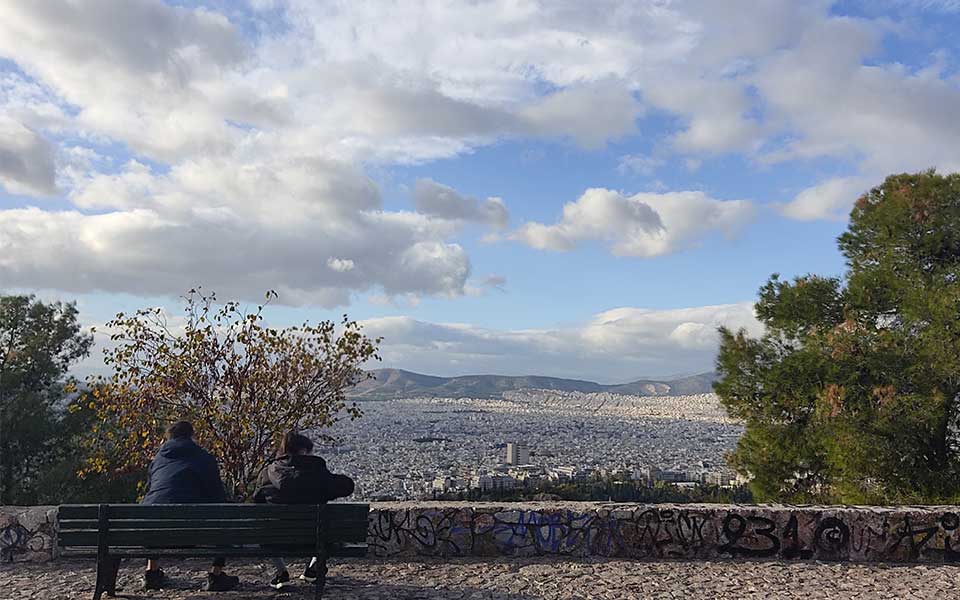
© Olga Charami
The square and legendary café, the gathering spot of intellectuals
The construction of Hadrian’s Aqueduct was begun by Roman Emperor Hadrian and finished by his son, Antoninus Pius, in AD 140. The water began from the springs in Mount Parnitha and, via a subterranean, carved channel, traversed 20 km to reach to the Lycabettus cistern. From there, through a system of pipes it reached the baths and springs of the city.
The reservoir (Dexameni), that gave its name to the area and square and operated until the 20th century, measured 26 by 9 by 2 meters in depth, while its façade was very impressive:
“The reservoir was fitted with a handsome columnar façade, indicating that it probably served as a nymphaion, or monumental fountain house. Four Ionic columns carried an entablature, with an arcuated (curved) architrave over the central bay,” notes archaeologist John M. Camp in his The Archaeology of Athens (Yale University Press, 2001).
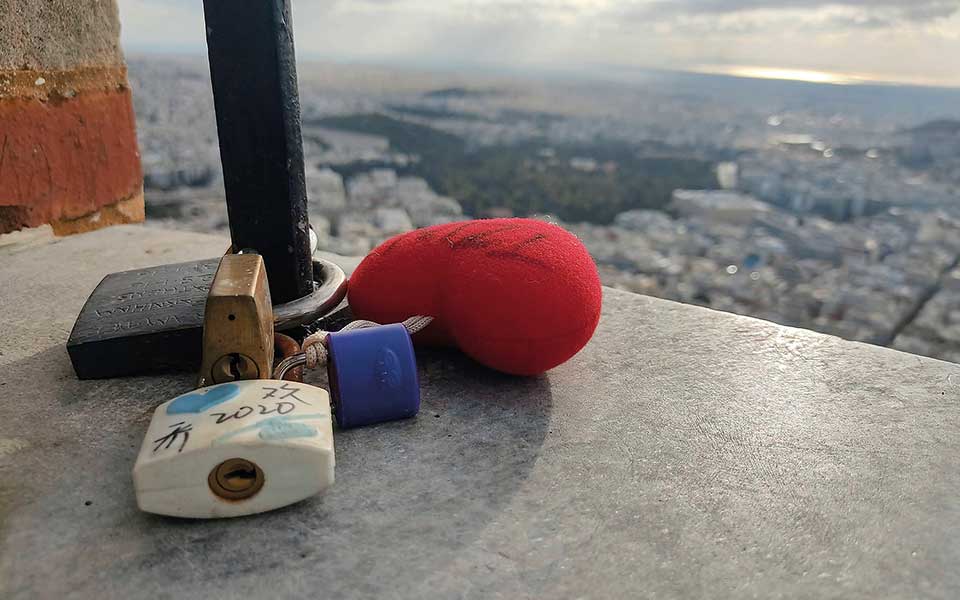
© Olga Charami
The square of the same name and wider area developed gradually next to the famed Dexameni cistern.
Poets and writers like Kostas Varnalis, Alexandros Papadiamantis, Nikos Kazantzakis, Nikos Karvounis and Andreas Karkavitsas, “all of Athens, and I mean the Athens that had intellectual interests, that wrote lyrics or intended to do so, that was featured in the newspapers and the magazines, that translated the ancients and Europeans; they all came to Dexameni, all year round,” wrote journalist and writer Giorgos Fteris in 1964, in his To Vima newspaper literary column.
Wonderful aura
The square and the legendary café of BarbaYiannis were intellectual hangouts from the end of the 19th century. The square retains its wonderful aura and the café continues to operate (not during the Covid pandemic); nevertheless it is difficult to imagine the literary “giants” of the age having discussions at these tables, and even more difficult to grasp the atmosphere here almost a century ago:
“With everything that was said in this somewhat remote setting of a bygone era, one would have had a good idea about Greek literature, the ambitions and directions of a new literary generation. Everything would remind us of Murger, but with an Athenian flair. Similar guys, similar bohemian deprivations, the ever-present desire for literary glory, pockets stuffed with manuscripts, discussions about all matters – poetry, language, social, political – everyone gathered around the tables drinking coffee,” Fteris noted.
This article was first published in Greek on www.kathimerini.gr

